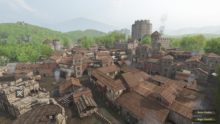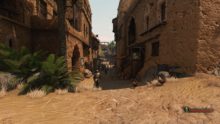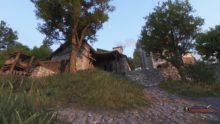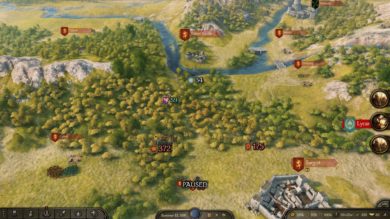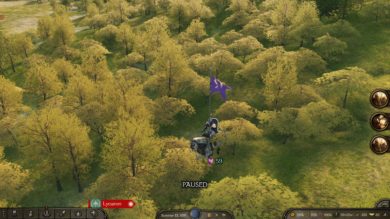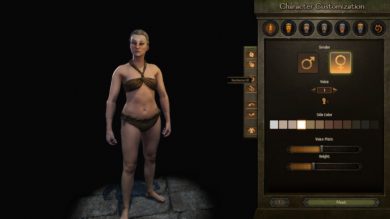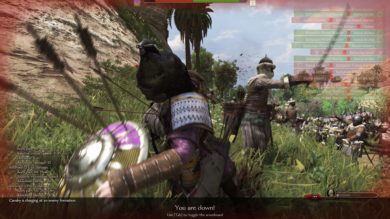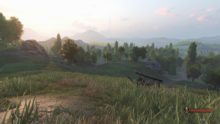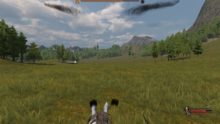
With Mount & Blade 2: Bannerlord, Taleworlds has finally released a real successor to the original Mount & Blade and its standalone expansion, Mount & Blade: Warband. But the release of Warband is now ten years ago, and for eight years now the fans have been waiting for Bannerlord.
But the long wait was worth it: On March 30th, the game was finally released in early access. Currently, Steam charges 50 Euros for the game, with a starting discount of 45 Euros for the release. Those who owned one of the previous parts could buy it for 40 Euros. Unfortunately, these actions are both over now, so you have to pay the full price for now.
Mount & Blade 2: Bannerlord is supposed to change some things compared to the predecessor: Bannerlord sends the player into the world of Calradia again, but into another time epoch. A new engine and numerous smaller changes to the gameplay are part of the game, which should set Bannerlord apart from its predecessor. The basic concept of the game will not change: Bannerlord will once again be a unique form of RPG, combining military, politics and economy in one big sandbox.
What players can and cannot expect from the current early-access version of Bannerlord will be shown in the following preliminary test.
With Bannerlord comes a new world map, because the game deals a good 200 years earlier than Warband. Therefore there are other kingdoms, cities and villages than in the predecessor. At the beginning, eight factions share the game world: Three kingdoms form the Calradian Empire and five kingdoms form the invaders who want to fight the Calradia Empire.
How we want to integrate ourselves into this world is up to us: There are no prescribed paths or objectives. As a purely optional support, however, there is a main quest where you have to take care of the preservation or fall of the empire. Like Warband, Bannerlord is also very multi-layered: towns and villages trade, factions wage war and there are friendships and enemies between the individual characters that influence the game.
Whoever wants to participate in Calradia needs influence above all else – whether it be through a high reputation, a lot of money or good contacts. All these points can be developed individually: You can make money by trade and robbery, gain control by making friends with different characters or rise to the nobility and act as vassal or even king.
There are no irrevocable decisions, just like in the predecessors: For example, you can leave the supported kingdom and then found your own, or you can give up politics altogether and be a robber knight at any time. All this is entirely up to the player.
The entry into Bannerlord, as you are used to from older parts, is difficult: At the beginning you are alone and very poorly equipped, if you want to be a hero here you have to work hard. If you move on the map without the appropriate caution, you are a real treat for the numerous plunderers and bandits that wander around. The game is ruthless: stronger opponents attack mercilessly and do not have the friendliness to face the player individually as in other games. Anyone who rides alone into a group of soldiers or exposes himself unprotected to a hail of arrows is dead in a few seconds.
Apart from bandits, other factions also cavort in the game world: caravans and villagers transport goods between the settlements, and nobles guard their land with their armies or join armies and start a violent expropriation of a neighbouring kingdom. At least for the time being, the groups are identical to Warband: there are no new categories.
Bannerlord’s combat system also remains identical to its predecessor in many respects: As usual in RPGs, weapons and armor can be chosen freely, and it is also up to you whether you enter the field on horseback or on foot. The combat system can be learned in a very short time, so that you can parry and fight back enemy attacks without problems. At least at the beginning you should be prepared for setbacks.
Better than new
In many key points, therefore, only little has changed compared to the predecessor. But there are also some new gameplay mechanics: For example, all towns and villages now have their own characters for which you can complete tasks. The relationship to these characters also determines how many and which soldiers you can recruit. So if you often have to replace your army, you should not be careless here.
Also new is the currency “influence”, which is used for votes in your own kingdom. It allows you to participate more in your own kingdom; to disown or expropriate vassals and vote on laws that affect the entire kingdom. It really makes you feel like you’re participating in the shaping of the kingdom, whereas Warband has always been a bit opaque here. In addition, there are now no longer kingdoms alone, but also family clans. If you found one yourself, you can get even more power.
A particularly important change compared to Warband are also the battles: During sieges, various siege weapons are now available, which can be freely selected and placed. In addition, the maximum number of soldiers increases for all battles from the previous maximum of 150 to up to 1,000 soldiers. As a result, impressive battles are now possible, which can also be better controlled by the improved tactical commands.
The AI has been drilled out considerably. Although it still has a few quirks, the soldiers now behave more realistically in many aspects. It is a pleasure to watch the archers laying siege to a castle: Finally they take cover and hide behind stones and wooden walls. But there are still weaknesses in Bannerlord: For example, soldiers may be waiting for you behind an open castle gate, but they do not always prevent you from entering the castle, they only defend themselves.
These were only the most serious innovations compared to Warband – in detail there are of course many more. For example, the much more accessible inventory system and the much better designed levels. In essence, Bannerlord is still almost the same Mount & Blade as we have known it for years, albeit in a much more polished and improved form. Especially the look back to Warband shows how horrible the old game actually looks by today’s standards, and how many possibilities one misses when switching back. Bannerlord can therefore be regarded as a worthwhile upgrade.
Nevertheless Taleworlds does not use the possibilities completely at the moment: There are still some innovations missing to make the gameplay perfect, e.g. alliances with single lords or kingdoms. But you shouldn’t forget that Bannerlord is still in early access and therefore far away from the finished game. Many changes are still to come and Taleworlds is busy since the release to fix bugs and adjust the balancing.
Also new features are planned, e.g. Taleworlds has announced that some dialogues will get a voice output. This is already partly included in the main quest. If this is not enough for you, you can use mods like in Warband. These already exist in numerous variations: From small problem fixes up to new game mechanics everything is included.
Graphic
In terms of graphics, Bannerlord makes a huge leap forward from its predecessor, but it can’t really compete with modern AAA titles. Nevertheless, it can be said that Bannerlord is visually appealing and quite sufficient for the genre – at least most of the time. With the newly developed engine Taleworlds finally uses a quite high-resolution mixture of the usual texture maps (Lighting, Normal, Displacement etc.), which makes many objects look quite realistic. We consider the nature representation to be especially well done: A wide view into the greenery makes Bannerlord look quite nice.
However, the game has to struggle especially with the transitions between different objects, a fluctuating texture resolution and some flickering textures. In addition, the characters in the game could still use a reworking: Of course, in a game like Bannerlord not every character should look like a smooth actor, but often the random character generation still gets out of hand.
Some people, for example, have consistently closed their eyes, which makes them slide deep into Uncanny Valley. Moreover, the characters lack scars and similar disfigurements, which would give them a slightly higher recognition value. However, Taleworlds has already started to make improvements, so you are already aware of the problem. Besides, there were already the first mods in the release week, which dealt with this point.
In keeping with the early access, there are currently also some graphic errors in the game: Apart from the obligatory clipping problems, we were able to find incorrectly displayed textures in the course of the game. Sometimes the lightmap is missing, sometimes the whole texture and in some places the normal map looked through. But all these errors are not serious, since they occur quite rarely. Moreover, they were definitely to be expected in an early-access title, and for this situation Bannerlord does quite well here.
Performance
For our performance short test we used a system consisting of a Ryzen 7 3700X, 32 GB RAM and a Sapphire R9 380 Nitro with 4 GB. In doing so, we separately considered the CPU limit (minimum graphic details, 480p) and the GPU limit (maximum graphic details, 1080p) in a battle with 500 soldiers and the game’s overview map.
In the CPU limit, Bannerlord is not overly demanding in terms of the CPU, if you avoid extremely large battles: In battle we reach about 95 FPS with a RAM usage of 2.4 GB and a CPU usage of maximum 60%. Bannerlord uses many cores, but the main tasks are on one core, which seems to slow down the others. In our case this was almost continuously at 100% utilization. Those who want to counteract this can simply reduce the number of units: At the minimum value of 200 players, we reach an average of 200 FPS, where even significantly older computers should still be able to keep up without problems.
A bigger problem for the CPU is the overview map: In this one we also move around 100 FPS, but we also have slumps to around 85 if you zoom out far. It’s almost impossible to counteract this manually, so don’t use your CPU too slowly for the campaign mode. Nevertheless: Every halfway current gaming system of the last five years should be able to conjure up a constant 60 fps on the screen without any problems.
In practice, Bannerlord should be GPU-limited for most players, although the demands are also quite tame here: Even our ancient R9 3890 Nitro still manages an average of around 25 FPS in combat and on the highest details, although there can be rare drops to up to 15 FPS. On the overview map, however, the game is at around 30 to 40 FPS. Thus, every halfway current graphic card is able to conjure Bannerlord in 1080p with 60 fps on the screen without problems – at the latest at slightly reduced details. Modern high-end models shouldn’t have a problem even with UHD.
The bottom line is that Bannerlord should be playable on almost all computers without problems – at the latest when the graphics and unit controls are slightly reduced. Regardless of the settings, there are currently still some lagspikes, but these are rare: In our Playthrough there were only two situations in which the game was significantly affected by them. Fortunately, Taleworlds is already active here and has already eliminated numerous spike causes, and there were also already the first performance optimizations.
To the point
In essence, Bannerlord is a prettier warband with some additional features that complement and expand the game very usefully. The changes compared to Warband are not as serious as they could have been, but still: If you had fun with an older Mount & Blade, you will also have fun with Bannerlord – have fun.
The game has to struggle with its own claim: The extremely early announcement of Bannerlord – 2012 – has let expectations go through the roof. For this reason, Taleworlds also emphasizes that Bannerlord is still in early access and thus does not offer all features.
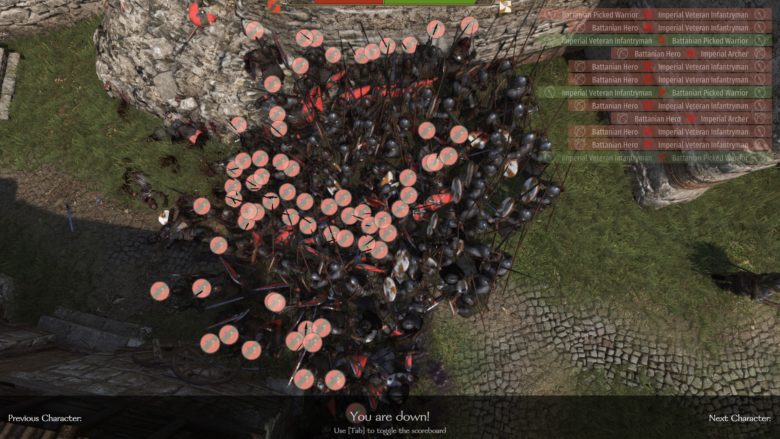
If the developers add a few more quests next year, tweak the UI a bit and add a few more features like more tactics and policy options, Bannerlord can be really, really good. But even now, despite some minor bugs, the game is still playable and definitely much more versatile and accessible than Warband.
At this point we also want to praise the launch support of Taleworlds: Up to now, patches for the game have been released almost daily. From now on, major updates are to be released weekly, and if the company maintains the scope of the first patch, Bannerlord should quickly become (even) better.
But whether one is willing to pay the full price for Bannerlord now is a difficult decision – because 50 € is a lot of money. If you see the same, you should better wait until Bannerlord offers more features, or you can get it for a lower price in a sale. On the other hand, if you’ve already warmed up with one of the predecessors and had a lot of fun playing with it, you’ll get a better game with Bannerlord in every respect and should have a lot of fun with it, too.
